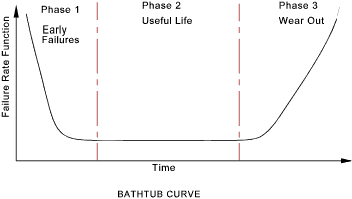Home
Reliability /Safety Index Page
Note: The information below is provided as an overview of Availability, Reliability and Maintainability and .. More detailed
and reliable information is provided at the sites linked at the bottom of this page...
|
General An item or system is specified, procured, and designed to a functional requirement
and it is important that it satisfies this requirement. However it is also
desirable that the the item or system should be predictably available and this depends upon
the its reliability and availability. For some disposable products in our modern
society the availability requirement may be acceptably low. For a large range of
consumer products the availability, based on high reliability, is an important selling point.
For items and systems used in critical areas including military equipment, process plant ,
and the nuclear industry, the
availability, reliability and maintainability considerations are vital. The ability of an item to be in a state to perform a required function under
given conditions at a given instant of time or during a given time interval,
assuming that the required external resources are provided.
Availability = Uptime / (Downtime + Uptime) The time units are generally hours and the time base is 1 year . There are 8760 hours in one year. Availability(Intrinsic) A i = MTBF / (MTBF + MTTR) MTBF = Mean time between failures.. Availability (Operational) A o = MTBM/(MTBM+MDT). MTBM = Mean time between maintenance.. Reliability The ability of an item to perform a required function under given
conditions for a given time interval.
The bathtub curve for mass produced mechanical items is controlled to minimise the initial early failure period by use of quality control to ensure uniformity of production of high reliability items. Before items are introduced onto the market they are rigorously tested to identify and correct design and manufacturing problems. A prime target of design, manufacturing and operation is to ensure that the useful life is extended by attention to the following factors.
For systems with items in series the overall reliability is the product of the reliabilities
of the individual components.. Maintainability The ability of an item under given conditions of use, to be retained in,
or restored to, a state in which it can perform a required function, when maintenance is performed under given conditions and using stated procedures and resources.
|
Links providing relevant information
|
|
Home
Reliability /Safety Index Page
Please Send Comments to Roy Beardmore
